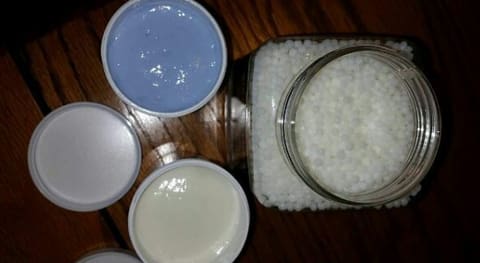
It's important to know what our moldable plastic sticks to, not only so that you can make new creations, replacement parts, or improvements to your existing materials, but also so you won't accidentally attach it to something while you're molding it. It will be quite sticky when you first start to use it, but will become less so as it cools.
When Molding:
First and foremost, our moldable plastic will not stick to parchment paper, cellophane wrapping or glass. It sticks to many types of plastics and metals, so be careful when choosing the bowl and stirring utensil to melt/mix the pellets. When molding the plastic, avoid working on or with the following materials if you don't want them bonded to the hardened plastic: acrylic, vinyl, PVC, polystyrene, PET, ABS, fabrics or metal, unless you want it stuck to those materials. Also, it's important to know that it can ruin your manicure by sticking to nail polish and chipping or removing it.
Once hardened:
Alternatively, those same materials are great for sticking to our moldable plastic once it has hardened, plus it sticks to itself very well, so you can build upon your creations. Other useful methods to fasten your creation to a costume or replacement part to a material that doesn't bond naturally, is to twist a screw into the creation while it's pliable, then untwist it. The grooves will remain once the plastic sets. Also, super glue or gorilla glue will adhere it well.
If the plastic ends up bonded to a material you don't want, it may be able to be removed by re-heating it with a blow dryer or a heat gun and peeling it off. The melted plastic is simple to use and mold for so many applications. Check out our instruction guide for more information. And I suggest using gloves to protect your fingernail polish.


Leave a comment: